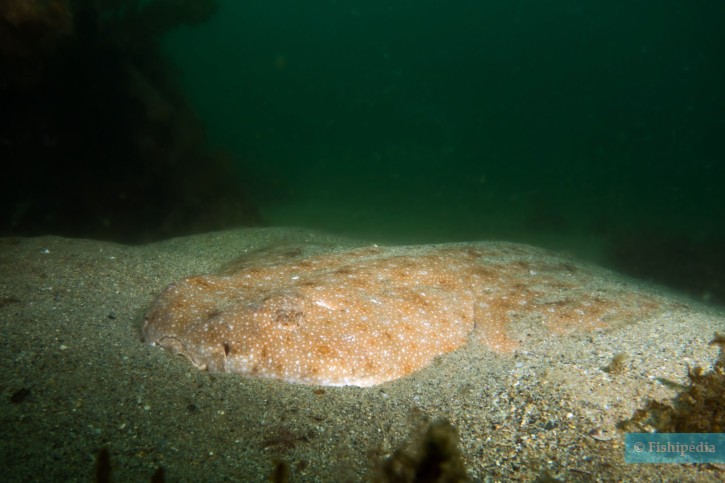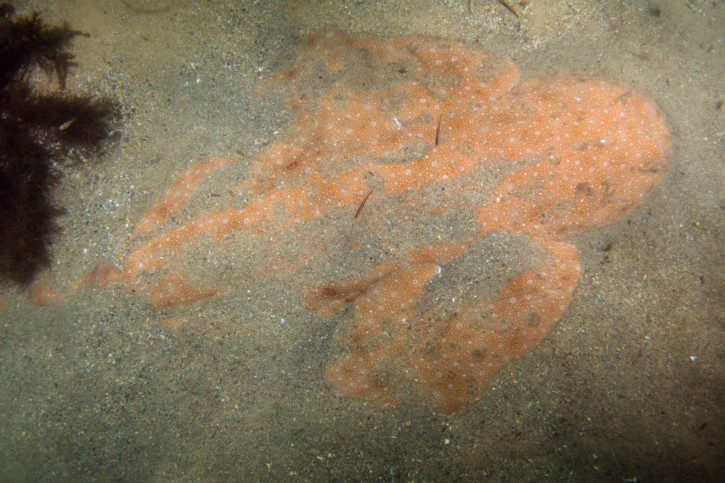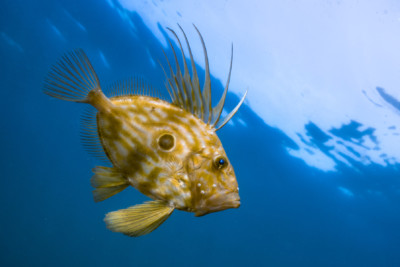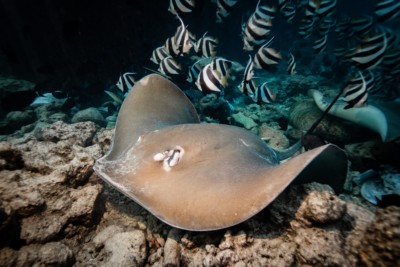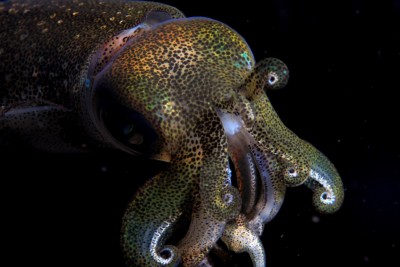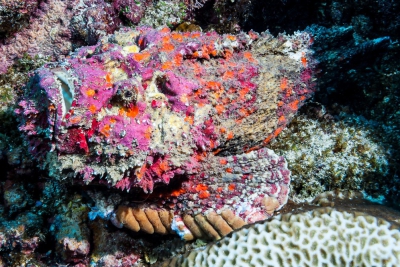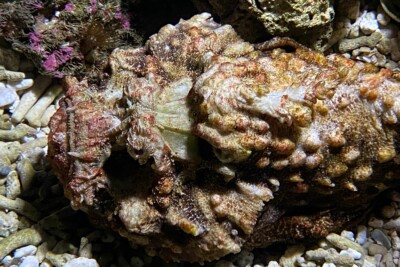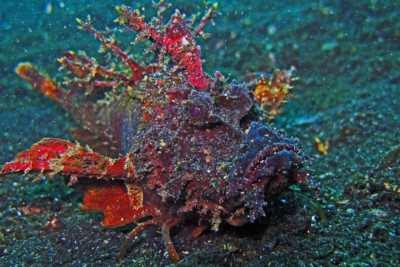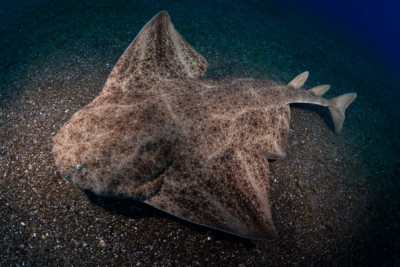eastern angel shark
| Scientific name | Squatina albipunctata |
|---|---|
| Descriptor | Last &White |
| Year of description | 2008 |
| IUCN category (World) | VU |
| Family | Squatinidae |
| Genus | Squatina |
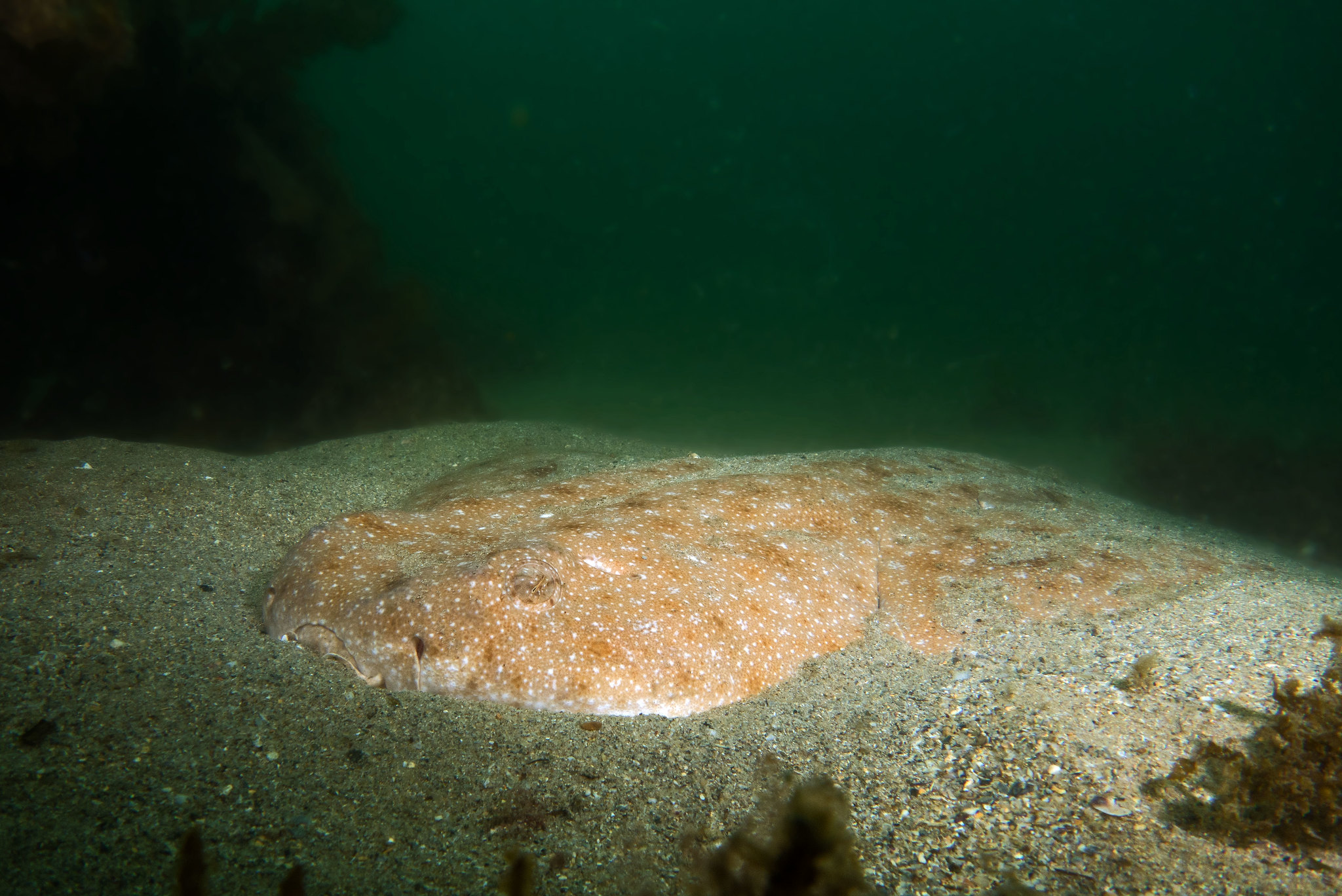

Introduction
The Eastern Angel Shark is a shark endemic to the east coast of Australia. It is found from the coast of Queensland to Victoria.
Some of its populations have been dramatically impacted by overfishing. In the Sydney region, population losses are estimated at 96% over 20 years. It is currently considered 'Vulnerable' according to the IUCN. Unlike its Mediterranean cousins, all of which are critically endangered, S. albipunctata remains common in some areas less affected by fishing pressure.
Who is it?
Morphology
-
Type
-
Average size100 cm
-
Maximum size130 cm
-
Mimicrysand
-
Patternponctuations
-
Type
-
Average size100 cm
-
Maximum size130 cm
-
Mimicrysand
-
Patternponctuations
How to recognize This fish ?
The body is robust and strongly depressed. Unlike some of its congeners, the trunk does not taper abruptly at the pelvic fin. The head is wide, elongated, and oval in shape. The pectoral fins are very large with a fleshy base. The two dorsal fins are close together, similar in size and shape.
Denticles cover the entire dorsal surface of the body.
Sexual dimorphism
Females are larger than males.
Behaviour & Life cycle
-
dietcarnivorous
-
Sociabilitysolitary
-
territorialYes
-
Way of livingnocturnal
Like other angel sharks, this species spends its days camouflaged on the seabed waiting for prey. At night, it comes out to hunt and swims close to the sea floor.
Reproduction
-
Reproductionovovivipare
This species is ovoviviparous. Little information has been published about its reproduction.
Risks for humans
-
VenomousNo
-
BiteYes
This species may bite if provoked or attacked. Its sharp teeth can cause significant injuries similar to those from moray eels.
Origin and distribution
Geographic distribution & Conservation
This fish is endemic to the tropical waters of the east coast of Australia. Populations further north are healthier than those in the south.
Conservation status of populations (IUCN)
What is its habitat?
Natural environment characteristics
-
Temperature20 - 25 °C
-
Depth35 - 415 m
Biotope presentation
This species appears to particularly favor sandy bottoms. It is rarely observed at shallow depths and can be found up to 415 meters deep.
Species of the same biotope
To go further
Sources & Contributions
Participation & Validation
The Fishipedia team and specialist contributors are committed to providing high-quality content. However, although the information comes from scientific sources or testimonials from specialists, the cards may contain inaccuracies.

Benoit Chartrer
Translation
Translation done with the valuable contribution of our translators, who make this information available to a wider audience. We sincerely thank them for their commitment.
Scientific partners
Same genus
Species of the same biotope
